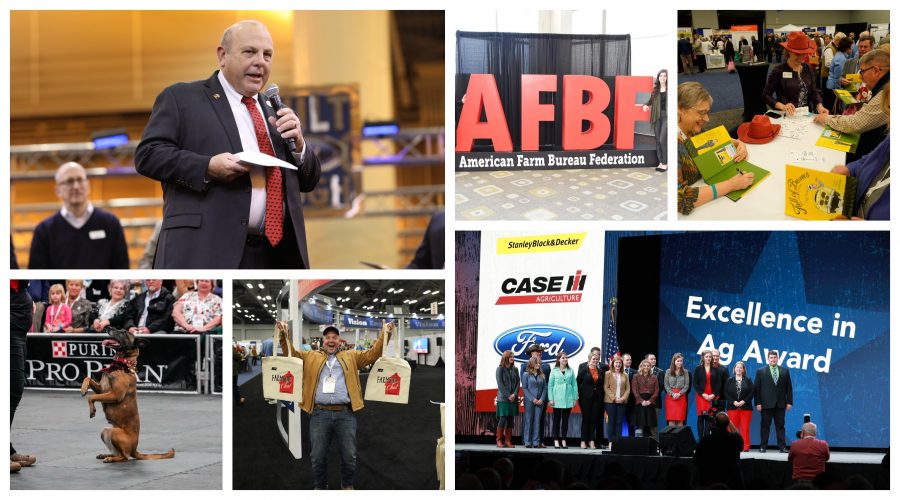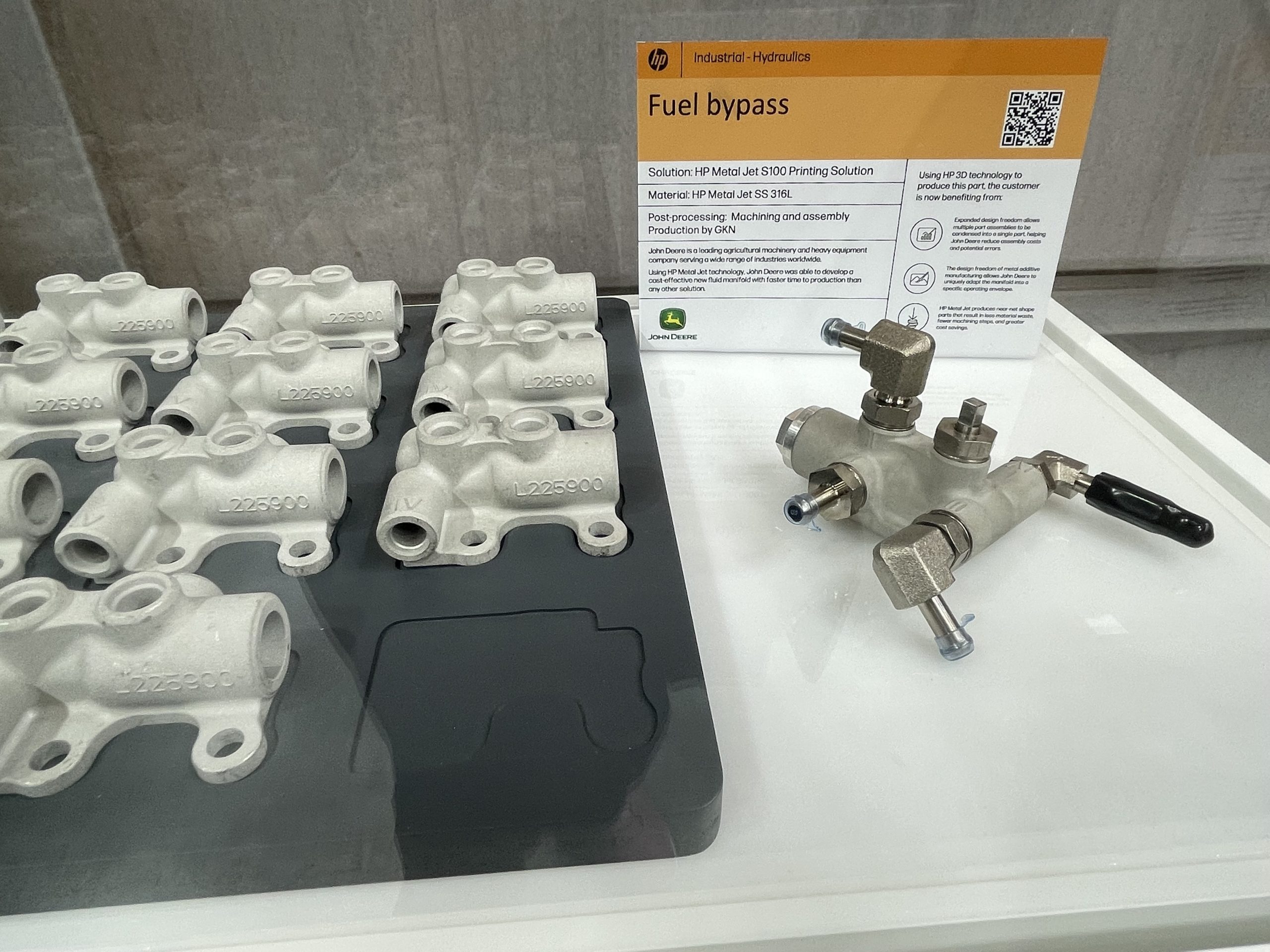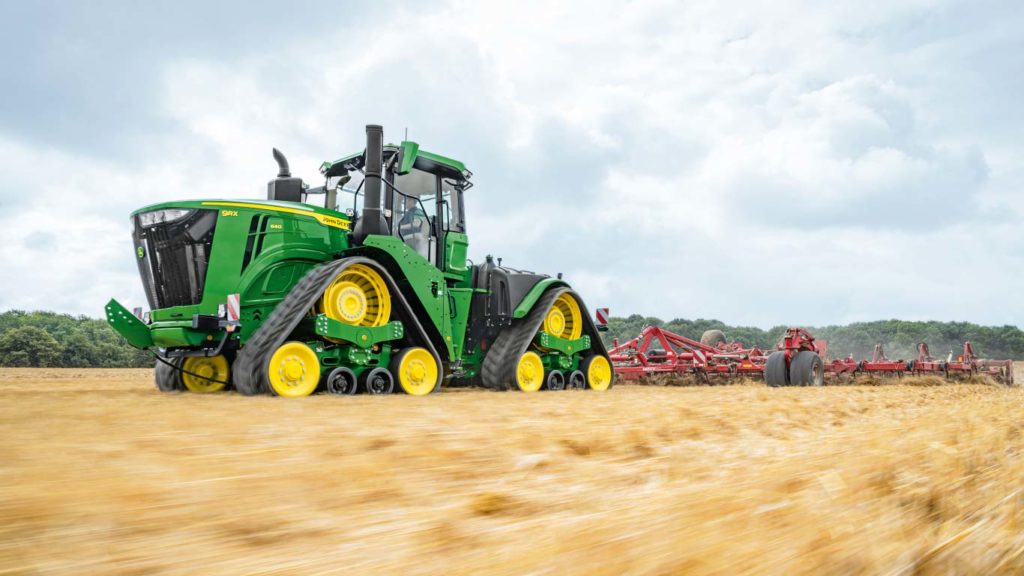As a 3D printing industry we have it within our means to augment, improve, repair, and extend the life of many of the products that surround us. We can breathe new life into phones, repurpose furniture, make spare parts and new components that actually improve old items. In the Brittle Spear series we looked into digital kintsugi, new readymades, an honest to goodness manifesto, and how they can be used to confront the delayed landfill of objects in our lives.
Now, a landmark case is set to extend the right to repair to a complex, high-value item: agricultural equipment. John Deere has signed a memorandum of understanding (MOU) with the American Farm Bureau Federation (AFBF) in which the $52 billion tractor maker has agreed to allow users to repair their products to a large extent. The deal could help in entrenching consumer rights and ensure that the products we buy are actually ours. However, if you look more closely at the MOU, you find that the right to repair win may not be as substantial as it seems.
The John Deere Right to Repair MOU
Many times, an MOU is more of a photo opportunity than a contract, but it can be useful for signaling new directions, policies and joint undertakings. In the MOU, the parties agree that embedded software from manufacturers cannot be changed, manufacturer IP is not compromised, nor is safety, and that farmers can do what they are legally entitled to in repairing their farm equipment. Deere says that it will provide its manuals, training, and diagnostics interface to farmers as well as specialty parts and tools to farmers and independent repair centers. People will get independent access to electronic locks and software. Furthermore, Deere says it will not prevent people from obtaining tools and software for repairs from other parties but can still of course pursue intellectual property violations.
Meanwhile, the AFBF commits to trying to block right to repair legislation.
“The AFBF agrees to encourage state Farm Bureau organizations to recognize the commitments made in this MOU and refrain from introducing, promoting, or supporting federal or state “Right to Repair” legislation that imposes obligations beyond the commitments in this MOU. In the event any state or federal legislation or regulation relating to issues covered by this MOU and/or “Right to Repair” is enacted, each of AFBF and Manufacturer reserve the right, upon fifteen (15) days written notice, to withdraw from this MOU,” the organization writes.
The AFBF is notable for having over 6 million members, a formidable national lobbying organization, and undertaking a two-decade campaign dedicated to climate change denial and lobbying. The organization also opposes a ban on neocotinoid pesticides, wants to speed up the approval of new pesticides, aims to amend the Endangered Species Act to be more voluntary, supports eliminating capital gains taxes and advocates more oil exploration in the US. The AFBF also has a farm dog of the year which in 2023 is Tough, a border collie. AFBF is also one of the largest insurance companies in the U.S.

The AFBF´s annual convention was sponsored by John Deere, as well as Anheuser Busch, Syngenta, Bayer and JBS, so perhaps they met there to hash this deal out. Now, across the internet somehow this is seen as a win for the right to repair movement? Has anyone actually read the MOU? I don’t really think so, it is very short and can be found here.
The Right to Repair Battle
A legislative and public battle has emerged around the right to repair. If I buy an item, then surely I should be able to repair, refurbish, or reuse it as I see fit. Meanwhile, companies are working to establish software, intellectual property, procedures and contracts that mean that only though their intervention should you be allowed to do anything to your device.
The right to repair is a bit of a complex concept. On the one hand, we don’t want our local airline duct taping an engine to the plane we’re riding in. However, it is also nonsensical to make someone overpay for an official component.
Of course, name brand parts and procedures are a way for companies to profit from their own aftermarket and repairs. They will want to maintain the recurring revenue and fat margins on spare parts. However, if they extend them too much, they stifle innovation and force consumers to pay high prices or discard objects too soon.
In the E.U., right to repair laws are popular but has repeatedly been blocked by lobbying. In the U.S., the Right To Repair act and other legislation have offered a great deal of hope to consumers and advocacy groups. A New York Digital Fair Repair Act seemed to pave the way in that state, but it was kneecapped right before it got to the finish line. It seems that sclerotic industries are shoring up their margins by lobbying once again to stave off future competition.
In a world where state capture is increasingly the norm, Iranian protesters are dying for a democracy that no longer exists anywhere. With laws being increasingly written by and for corporations, legislation will favor large entrenched companies that have purchased access to politicians. New firms and the population in general will be at a continual disadvantage.
John Deere’s Line in the Sand
John Deere would appear to be drawing a line in the sand and blocking further right to repair legislation with the aid of a farm lobby organization. What they agree to is essentially the status quo, but they are expressly not bound to anything without any actual legislation insight.
Most of the MOU repeats the position of Deere and the only win is that it will provide access to diagnostics tools to a certain extent. Because of its own design rights and other IP on parts and software, the company can still block anyone from actually making spare parts or independent software. This is simply a case of Deere accepting reality and preempting any legislation that goes further than this.
If John Deere is able to extend its control over farm equipment throughout its lifecycle, it will mean more revenue for Deere and more costs to farmers. Farmers here are committed to adhering to Deere’s red lines on right to repair and could read out diagnostics but can’t really extendor improve tractors in a completely meaningful way.
3D Printing and Right to Repair
Companies have been lobbying to extend IP and extend protections on spare parts indefinitely under a number of guises for many years now. This has a very real and very meaningful impact on 3D printing. Crucially, with 3D printing, we can augment, improve, update, and extend the life of many items and machines.
In the future, additive manufacturing could be the technology that offers people reasonable access and the ability to repair their own goods. It even allows them to improve or repurpose their products. Or we could stand by while corporations lock us out of our own items and lock the 3D printing industry out of a multi-billion per year opportunity.
 John Deere’s 3D printed tractor parts. Image courtesy of Sarah Saunders/3DPrint.com
John Deere’s 3D printed tractor parts. Image courtesy of Sarah Saunders/3DPrint.com
The aftermarket for automobiles in the US is worth $500 billion per year. A much broader industrial aftermarket would be a much more significant opportunity still. SmarTech Analysis estimates the market for 3D printing in general industry, including agricultural equipment, to generate $5.48 billion by 2029, according to its Market Opportunities for Additive Manufacturing in the General Industry and Tooling Sector 2020-2029 report. We are at the cusp of being able to cater to hundreds of billions of dollars of 3D printed parts for MRO and improvement of existing vehicles and must not let this opportunity slip us by.
There’s no doubt that John Deere isn’t aware of this opportunity. The company recently showcased the use of HP’s metal binder jetting technology to 3D print valves for its tractor fuel system. The parts were said to cut production time while also withstanding the harsh environmental circumstances that these machines are exposed to. The company is also using HP’s multi jet fusion for prototyping and design work for parts such as windshield holders that have introduced a number of benefits. This includes cutting pre-assembly time from 30 to 10 days, delivery times by up to 10 weeks, and production costs by between 20 to 25 percent. With this in mind, it may be that John Deere wants to be able to control this portion of its market on its own terms.
Fighting for your right to party is something almost all of us can get behind. In contrast, to fight for your right to repair sounds like a rather anemic and esoteric thing to battle for. In a disposable world—where we discard goods that have cracks or cease to work almost immediately in order to feel the pleasure of buying a new shiny item—the old is something to be abandoned. Between that shiny new thing and the vintage, there is but landfill.
At the same time, companies make it more difficult for consumers to repair their products. A simple item is redesigned to be an integrated front scooper that is ten times more costly to replace. Phones come with batteries that can not be swapped. Almost everything we buy today is shinier, newer, fancier, more expensive, and more fragile than that which it replaces. On a dying planet, this is indeed an egregious sin.
Subscribe to Our Email Newsletter
Stay up-to-date on all the latest news from the 3D printing industry and receive information and offers from third party vendors.
Print Services
Upload your 3D Models and get them printed quickly and efficiently.
You May Also Like
Heating Up: 3D Systems’ Scott Green Discusses 3D Printing’s Potential in the Data Center Industry
The relentless rise of NVIDIA, the steadily increasing pledges of major private and public investments in national infrastructure projects around the world, and the general cultural obsession with AI have...
Formlabs Teams Up with DMG MORI in Japan
In late June, Nick Graham, Chief Revenue Officer at Formlabs, announced on LinkedIn that the company had partnered with DMG MORI, one of the world’s leading machine tool companies, to...
EOS in India: AM’s Rising Star
EOS is doubling down on India. With a growing base of aerospace startups, new government policies, and a massive engineering workforce, India is quickly becoming one of the most important...
3D Printing News Briefs, June 25, 2025: R&D Materials, 3D Printed Veneers, & More
In today’s 3D Printing News Briefs, 3DXTECH has launched a program that gives customers early access to experimental materials, and the first Lithoz CeraFab Multi 2M30 in the Czech Republic...





































